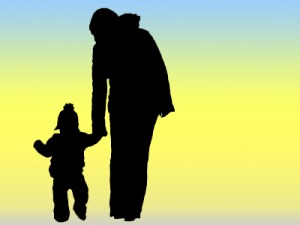Save The Changes You Make With A Child Theme
 When you make stylistic changes to your website you want them to continue to exist even if the theme you are using gets updated. This is the main reason it is advisable to create a Child Theme for the theme you are using. When you make your website with the Child theme activated you have a safety net. When the Parent theme is updated – maybe the developer found a better way to do something, or updated it because of new security protocols – you will not lose the changes that you have made to the look or function of your theme.
When you make stylistic changes to your website you want them to continue to exist even if the theme you are using gets updated. This is the main reason it is advisable to create a Child Theme for the theme you are using. When you make your website with the Child theme activated you have a safety net. When the Parent theme is updated – maybe the developer found a better way to do something, or updated it because of new security protocols – you will not lose the changes that you have made to the look or function of your theme.
Simplified – A Child theme is a folder with one or several files in it that changes the look or actions of your website based upon a Parent theme. Style changes go in this folder on a css stylesheet. WordPress references the child theme to the parent theme. When the parent theme is updated the changes made on the child theme remain.
Other changes can be made to your theme and placed in the Child Theme folder – such as to the header.php, to change where the header is located on your website, or adding any changes to the footer.php, etc.
If you are just a beginner you may not yet be making changes that require a child theme. Many premium themes – ones you pay for - have a lot of customization built in, that will not be affected when the theme updates.
But as you continue to refine your website and make little tweaks to the style, or decide you want to add functionality with special coding, you will want to create a child theme folder, make child theme docs (style.css, footer.php, header.php, etc.) and place them there.
If you haven't already read my blog, FTP Program and Editor you may want to do so. It explains the two free programs that I suggest you download that help you make a child theme and that will facilitate your work on your website.
“A child theme is the best, safest, and easiest way to modify an existing theme, whether you want to make a few tiny changes or extensive changes.” says WordPress.org
OKAY Let’s Make A Child Theme
1. You have chosen your theme and now decided it is time to make a child theme. If you need to upload a new theme do it from your dashboard. (Example you decided to try Origami, and you upload it from your WordPress dashboard: Appearances).
2. You create a child theme folder in your WP website, on the server that hosts it, in /wp-content/themes. There are two ways to do this:
a) Use your Cpanel login with your host and create a new folder through file management.
b) Use an FTP program (such as Filezilla) to open up the website and by right clicking create a new directory in the wp-content/themes
c) The folder you create is the theme's name hyphen child Example origami-child
I suggest using FTP because the next step requires creating a stylesheet in Notepad++ and placing in it that folder.
3. Open Notepad++, a wonderful free source code editor. You can copy and paste the following into a new doc and then modify it with your theme's name. Be sure that the /* at beginning and ; at end are all there. They are very important to the coding.
Example using Origami as the theme
/*
Theme Name: Origami Child
Theme URI: http://siteorigin.com
Description: Child theme for Lindy's EZ WordPress Origami website
Author: Lindy Flynn
Author URI: http://EZWordPress4U.com
Template: origami
Version: 2.5.17
*/
@import url("../origami/style.css");
4. When you save that document in Notepad++ be sure to save it as “style.css” The css says that it is a cascading style sheet document.
5. Next step is to place it in the child theme folder on your host. You can ftp it there or you can upload through your host panel interface.
6. At the same time I ftp the style.css into the child folder I like to open up the parent and copy the “screenshot.png” from the parent folder to my computer and then copy it into the child folder. That way when you go to activate the child-theme it will have an image duplicating the parent's.
7. From your WordPress dashboard, Appearances (be sure to refresh browser window), activate that chid theme.
8. When you go to Editor, under Appearances to make a change - say font color, the stylesheet that automatically is shown is the Child stylesheet.
Congratulations! You have now protected your coding and special changes from oblivion.
Additional resources:
The best explanation and instructions I have been able to find is the one on WordPress.org
Child Themes
http://codex.wordpress.org/Child_Themes
Themify - Has an excellent section on saving the whole theme templates folder to the child theme when you want to modify more complicated functions.
http://themify.me/docs/child-themes



